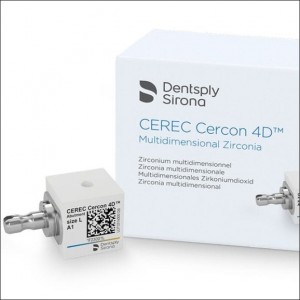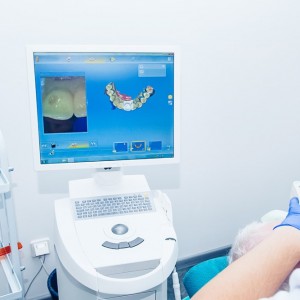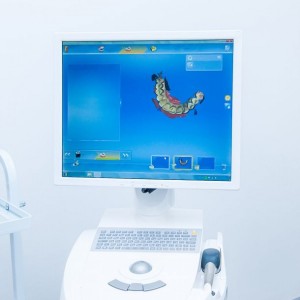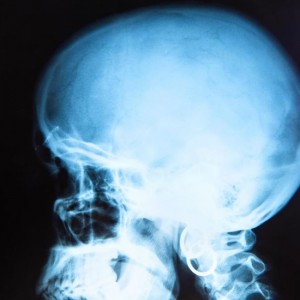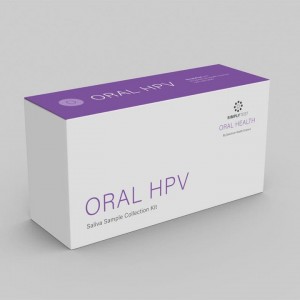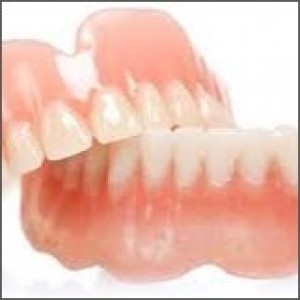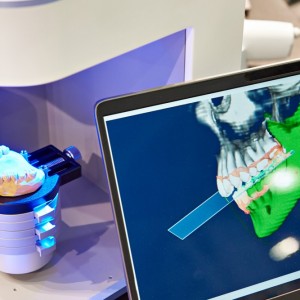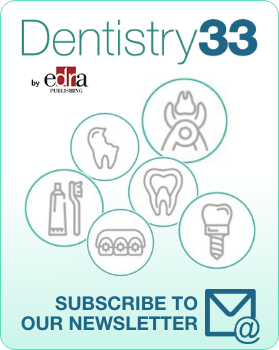
Are clinical adjustment of cemented CAD-CAM monolithic indirect restorations a treath for the material propriety over time?
Lorenzo Breschi
Nowadays, numerous researches are conducted to improve and understand CAD-CAM processes in terms of technology and materials. Indeed, the improvement in the knowledge of the topic is becoming tangible in terms of efficiency, esthetic and precision. There are several monolithic materials indicated for indirect restorations (yttria-stabilized tetragonal zirconia polycrystal (Y-TZP) ceramic, lithium disilicate, zirconia-reinforced lithium silicate, polymer-infiltrated ceramic, and nanofilled composite resin) and most of them have reached optimal mechanical and esthetic properties, thus becoming the materials of choice in clinical practice. Ideally, indirect CAD-CAM restorations should not require adjustment during the delivery appointment. However, this is not always possible because the removal of premature contacts or adjustment of the proximal contact areas might be necessary. Clinical adjustments, made by using diamond rotary instruments, are proved to create undesirable consequences such as increase of surface roughness, that facilitate biofilm formation (the threshold smoothness for bacterial adhesion is 0,20µm) and antagonist wear. In addition, surface roughness induces stress concentrations, which compromise porcelain strength. Furthermore, surface corrections are responsible of color modification of certain restorations. Even if there is great concern about the problems created during restoration adjustments, there is little knowledge on the effects that clinical adjustments and polishing have after aging.
A remarkable work performed by Francesco Saverio Ludovichetti and his team and recently published on the Journal of Prosthetic Dentistry attempt to assess the surface roughness and fracture resistance (with or without mechanical aging) of cemented CAD-CAM monolithic materials submitted to grinding and polishing procedures.
MATERIALS AND METHODS
98 CAD/CAM blocks (IPS e.max CAD (Ivoclar vivadent AG); Vita Suprinity (Vita Zahnfabrik); Vita Enamic (Vita Zahnfabrik); Lava Ultimate (3M ESPE)) were transformed into cylinders, polished and crystallized. To evaluate the roughness of the cylinder three different measurements were performed with a 3D laser conofocal microscope: the first measurement was collected after polishing or glazing, the second after a 0,3 mm grinding with a 30-µm grit and the last one after the polishing procedures with a polishing kit and a diamond paste. Sixty additional 1.8-mm disks and 30 1.5-mm disks from each material were prepared for fracture resistance test. A simplified trilayer model, was used to mimic the tooth structure. The different specimen were divided in three different groups: control group (without no surface treatment); ground surface group and ground and polished surface group. Half of the specimen of each group were tested immediately and the second part was aged in artificial saliva. All the specimens were loaded in a mechanical testing machine and the load (N) at failure of each specimen was recorded as the fracture resistance.
RESULTS
The results showed that in the control groups, no significant differences were found between the IPS e.max CAD and Vita Suprinity or between the Lava Ultimate and Vita Enamic, which showed higher roughness than the glass-ceramic materials. After grinding, this behavior was maintained, except for the Vita Enamic, whose roughness was similar to that of the IPS e.max CAD. After polishing, the Vita Enamic showed the highest roughness, whereas for the other materials there were no differences. From this results it’s interesting to note that when the polishing was finished with a diamond paste, the smoothness of the Lava Ultimate and Vita Enamic increased notably, evidencing that even though these materials do not require clinical adjustments, they should be polished after the cementation in the clinical practice. Surface treatment and aging did not influence the fracture resistance of the materials. Vita Suprinity showed an increase in fracture resistance after cyclic fatigue, regardless of the surface treatment condition. This unexpected result could be explained, according to Ludovichetti and his team, by the higher resistance against crack propagation and higher flexural strength of the material. This behavior might be attribute to the presence of the zirconia fillers used to reinforce the glassy matrix of Vita Suprinity.
CONCLUSIONS
Grinding increased the roughness of the materials, except for the Vita Enamic and that the smoothness of the glazed glass-ceramics was not restored by the polishing procedures. Grinding, followed or not by polishing, did not impair the fracture resistance of the materials and aging did influence the fracture resistance of the materials, even in the ground groups. Finally, the reliability of the materials was not influenced by the material, surface treatment, or aging.
For additional information:
Effect of grinding and polishing on the roughness and fracture resistance of cemented CAD-CAM monolithic materials submitted to mechanical aging.
 Related articles
Related articles
Products 01 September 2025
Dentsply Sirona Releases Innovative CAD/CAM Zirconia Block and Abutment Resin Cement
The CEREC Cercon 4D Multidimensional Zirconia Abutment Block combines high strength with aesthetics for both hybrid abutments and hybrid abutment crowns.
Restorative dentistry 01 July 2025
Advances in CAD/CAM Technology for Chairside Restorative Dentistry: A Workflow Analysis
Chairside CAD/CAM technology has revolutionized restorative dentistry, offering streamlined workflows and improved patient outcomes.
News 03 February 2025
Directa USA is excited to introduce Ceramir CAD/CAM BLOCKS, a revolutionary bioceramic material that marks a groundbreaking advancement in prosthetic materials and embodies the spirit of...
Advances in dental materials as well as in computer technology have made CAD/CAM-fabricated restorations not just possible in dentistry but plentiful.
Ceramir CAD/CAM BLOCKS are a breakthrough in the CAD/CAM materials market. Manufactured by using a special advanced patented laser sintering technology, the new Ceramir CAD/CAM BLOCKS have a unique...
 Read more
Read more
Much like EMTs rushing to the scene after an accident, stem cells hurry to the site of a skull fracture to start mending the damage. A new finding has uncovered the signaling mechanism that triggers...
Products 05 November 2025
SimplyTest has launched a groundbreaking saliva-based test to detect high-risk strains of oral human papillomavirus (HPV), a major cause of oropharyngeal cancers.
News 05 November 2025
Perimetrics, Inc., a dental technology company pioneering quantitative diagnostics, announced today that the U.S. Food and Drug Administration (FDA) has granted clearance for the InnerView...
News 05 November 2025
On October 15, open enrollment for Medicare began nationwide. Hundreds of thousands of seniors in New Jersey will once again face the challenge of finding the right Medicare coverage, including the...
Digital Dentistry 04 November 2025
Digitalisation is an expanding field in dentistry and implementation of digital teaching methods in dental education is an essential part of modern education.



